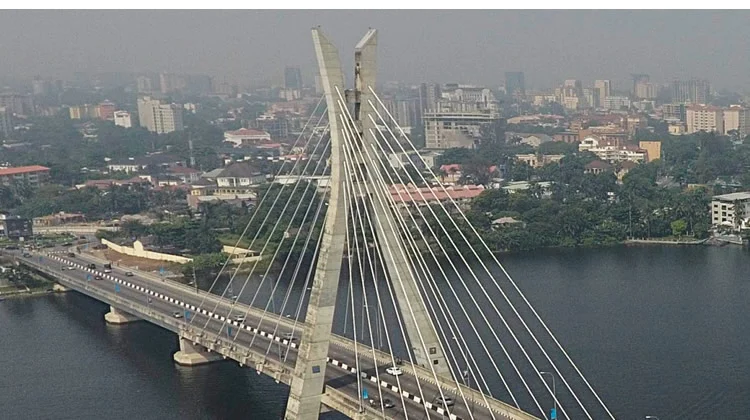By Olugbenga Jaiyesimi
Which comes first, economic growth or infrastructure acquisition for economic growth? Former Anambra State Governor, Peter Obi, on AriseNews TV had cautioned on the manner the current government was pursuing infrastructure acquisition for the country and prioritising it over human capital development. Mr Femi Adesina came out blazing with a press release titled, “If not infrastructure, then what” to defend his principal, the President Muhammadu Buhari. This is bringing to the fore the chicken or egg question; a question to which if we do not get the right answer will come to haunt the nation in future.
What are the issues and what is our reality? No doubt the sixteen years of the People’s Democratic Party was a colossal failure in infrastructure acquisition safe for in the telecom sector. On the other hand, are some catchy infrastructure projects being executed by the All Progressives Congress government. APC apologists see infrastructure pursuit as a silver bullet to pull the economy out of depression. At their onset, they had declared they would use infrastructure contracts to reflate the recessed Nigerian economy. Has it been achieved? After all, under their watch, Nigeria is yet to surpass the nominal Gross Domestic Product the party inherited in 2015.
To unravel this question we have to go back to economic history. Some millennia ago, the Chinese and Hindu civilisations had the foremost economies in the world. Was it driven by infrastructure? No, it wasn’t. Fertile plains and lands that supported growing populations that had transitioned into sedentary agriculture were responsible. This held elsewhere from Mesopotamia to the Nile valley until the Industrial Revolution that started in the 18th century. Infrastructure acquisition was never the engine of growth rather human ingenuity, innovation and industrialisation has been. Further examples, the laying of rail lines came after the development of steam-powered engines. Hydroelectric dams came after electricity was harnessed. Tarred roads came after the invention of the internal combustion engine that now powered carriages. These innovations spurred development, including the growth of infrastructure, not the other way round.
As early as Adam Smith (1776) the importance of infrastructure to enhance commerce to mobilise for war or sustain empire was recognised, but it was never the horse that empowered growth, it was usually the cart (talking of putting the cart before the horse). We can also ask what prompted the railway lines to Kano State to evacuate the groundnut pyramids? In general, infrastructure was never used to initiate economic growth. This is not saying infrastructure does not speed up a primed economy, it does. Would it on its own lift a depressed economy?
My narration of infrastructure playing second fiddle held until the Great Depression of the 1930s. Maynard Keynes, it was who postulated that government spending on public works among others to shore up failing demand from growing unemployment was turning the Great Depression into a vicious circle. For the first time, spending on infrastructure became stand-alone so much so that constructing ‘roads to nowhere’ became part of the economic lexicon. Public works expenditure was indeed the core of US’ President Franklin Roosevelt’s New Deal. It also became politically expedient to promote infrastructure expenditures to win votes.
To justify infrastructure expenditures studies were done to show that spending a certain percentage of GDP on infrastructure added a certain percentage to GDP growth. How well this holds up is debatable and will depend on variables and missing links in different countries. Also as the need for infrastructure in mature economies of Europe and the US slowed down attention turned to encouraging newly independent countries in the world to take out loans for infrastructure, particularly Latin American countries. This led to the debt crisis of the 1970s and 1980s. Africa too shared in this crisis.
When the New Deal was being executed in the US resulting in a formerly laissez-faire country becoming more interventionist, the US did not need to import an ounce of cement, steel or any other material used in construction. We in Nigeria would have to import all the steel needed for infrastructure. I am certain the expertise for the construction of hydroelectric dams would be found in the US and not in China. Not so in Nigeria. The money to finance the projects would not be coming from London but from the US Federal Reserve Board. Meanwhile, Nigeria is seeking foreign loans to finance infrastructure. These are some of the variables that would determine the success or failure of infrastructure expenditure for economic growth.
A mega infrastructure contract in Nigeria creates employment for Chinese technicians, engineers and builders. It would keep steel plants in China at fuller capacity creating further employment for Chinese workers. It would keep our resources, in-kind and cash, flowing to China for a long time to service a spurious loan created out of thin air.
These projects, on their own, do not earn dollars yet we keep borrowing dollars to acquire them. It’s easy for these loans to become an albatross around our necks as the loans come due and we are unable to generate enough dollars to pay back. Keep in mind Zambia, Sri Lanka and some other heavily indebted countries.
On conducting a Cost-Benefit Liability analysis of an infrastructure project, we discover that the provider of the infrastructure accrues more benefits from the project than the user or consumer nation which in the long run carries the liabilities. This explains why newly independent nations were encouraged to take loans for physical infrastructure as espoused in the book, ‘Confessions of an Economic Hitman’ by John Perkins. It also explains the reason China builds infrastructure all over the world.
To be continued next week…

